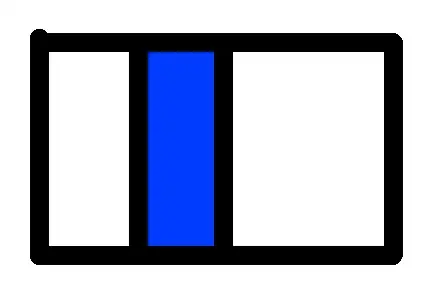Maybe you're right!
You've discovered a paradox. All of the following seem to be true, and yet they contradict each other:
- A rectangle has positive area.
- A rectangle is made entirely of line segments.
- A line segment has area 0.
- If a "whole" is made entirely of pieces, then the area of the whole is the sum of the areas of the pieces.
In order to resolve the paradox, we have to deny at least one of the four premises. The standard definition of the word "area" is one that rejects premise 4 and admits the other three premises.
However, we could define "area" (or even "rectangle") differently and find a resolution that rejects any one of these four premises (and admits the other three). All of these resolutions are self-consistent, so they can all be considered "correct", but they are also usually considered to be "worse" than the standard definition of the word "area".
Denying premise 1
If we want, we can deny that a rectangle has positive area at all; we can define the word "area" so that all rectangles have area 0. But this definition of the word "area" doesn't match our intuitions about area at all, so let's move on.
Denying premise 2
An interesting resolution is to deny that a rectangle is made entirely of line segments.
It's hard to make this one work, because one of the core assumptions of standard geometry is that all "shapes" are made up of points, which entails that all rectangles are made up of line segments. However, if we make some serious changes to our fundamental assumptions, we can end up with a theory where rectangles are not made entirely out of line segments, but rather out of rectangles with infinitesimal (but non-zero) width.
I don't actually know of any formulation of geometry that works this way, but from what little I've heard about smooth infinitesimal analysis, it might be such a formulation.
Denying premise 3
We can deny that a line segment has area 0. This resolution doesn't seem to require us to change any of the fundamental assumptions of geometry; all we have to do is change the definition of the word "area".
All we need to do is invent a new definition of the word "area" under which premises 1, 2, and 4 above are all true. There are only two problems with doing this:
- I don't know whether or not anyone has actually done it yet. Maybe there is no easy way to do this after all.
- The new definition of "area" can't be a real number, because there is no real number which can be added to itself infinitely many times to produce a result which is positive and finite.
Denying premise 4
This is the resolution that results from the standard definition of the word "area" used nowadays. Under this definition, the area of a line segment is exactly 0. The only "problem" with the standard definition is that the area of a "whole" can be greater than the sum of the areas of the pieces, if there are uncountably many pieces.
In other words, the standard definition of "area" is not additive. Intuitively, it seems like area should be additive. After all, you said that it seems like self-evident truth that if you divide a rectangle into pieces, then the sum of the areas of the pieces is the area of the rectangle.
Combining 3 and 4?
I have a resolution you might like.
It seems like if you take a rectangle that has area, and divide it into equal pieces, then those pieces ought to have a nonzero area. So go ahead and define the "true area" of a shape in whatever way you want so that this holds true. If you think that a line segments should have an infinitesimal area, let's go ahead and say that the "true area" of a line segment is an infinitesimal number.
Meanwhile, define the "formal area" as the standard definition of area used by mathematicians today.
If you do this, then the resolution is simply the fact that "formal area" is not the same thing as "true area"! Instead, "formal area" is merely the closest real number to the "true area".
So although the "formal area" of a line segment is 0, you can think of this as being a rounding error, and the "true area" is actually greater than 0. Once you bring uncountably many line segments together, then the rounding error becomes significant.
But keep in mind that when mathematicians say "area", they mean what I'm calling "formal area" here. My so-called "true area" isn't something that mathematicians nowadays often think about or talk about.
